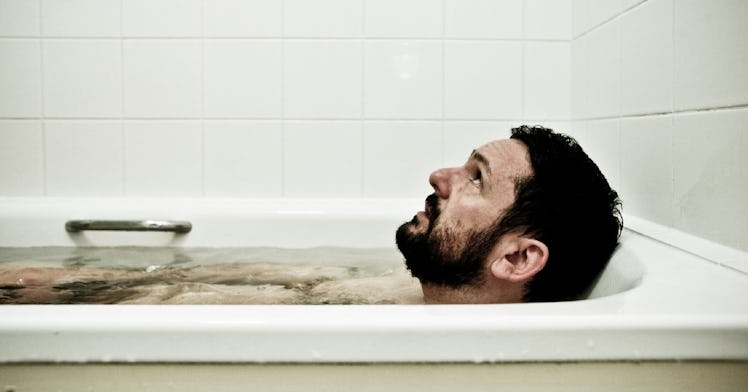Ice Baths Are The Perfect Way To Recover From A Tough Workout — With A Catch
Research shows your muscles could benefit from a cold dip in the tub.

There’s nothing better than a sauna session to cap off a grueling workout at the gym. But if you want your muscles to be primed for your next workout, you may want to hold off on the heat and opt for an ice bath instead.
Immersing yourself in cold water has tons of perks for the human body, from boosting the immune system, protecting against inflammation, reducing risk of respiratory infections — even improving your psyche. In one study of more than 3,000 people, those who took cold showers reduced sick day absences by 29%. And a new review study found that ice baths may cut men’s ‘bad’ body fat and decrease the risk of conditions such as diabetes,
These benefits extend to your workout, too. “Ice baths can reduce the intensity and duration of post-exercise muscle soreness,” says Nicholas Jiacopello, PT, DPT, a physical therapist at the Hospital for Special Surgery in New York City. “This in turn allows you to get back to training quicker and more effectively.” Here’s how ice baths speed up recovery, and what you need to know about the long-term effects of dunking yourself into frigid water.
How Ice Baths Work
A few theories support why ice baths ease muscle soreness. This includes the ability of ice and cold water to reduce swelling, for the same reason why you ice an injured knee or back as opposed to using a heating pad or patch. And when the body is cold, metabolism slows, causing all physiological processes — including the soreness and pain that comes with muscle building — to idle.
“One of the biggest reasons ice baths are effective is that cold water constricts blood vessels,” Jiacopello says. “This flushes waste and lactic acid out of the muscle tissue.” When you exercise, your body is warm, and this increases blood flow to working muscles to improve your performance. To get muscles to fully rest while you recover, an ice bath shrinks blood vessels. This in turn improves circulation by diverting blood flow away from the skin into deeper muscles, tissues, and organs.
One study found that a 10-minute cold shower after exercise may even aid in hydration post-exercise. This is due to the change of skin and body temperature and restriction of blood flow to the skin.
Ice Baths May Be a Short-Term Band-Aid
If you’re an athlete or someone who is training hard, there’s no harm in doing ice baths to reduce soreness and stick to your training plan. But adding ice baths after every workout indefinitely may not help much.
“Research has shown that cold water immersion can blunt cellular responses that typically occur after exercise that allow for muscle hypertrophy (the act of muscle mass increasing),” Jiacopello says. “This means that prolonged ice bath sessions may wind up limiting long-term gains when it comes to muscle mass and overall strength.”
For this reason, Jiacopello recommends that athletes or anyone training for a race or other fitness goal keep ice baths to something you do in season or as part of their training. Once you’ve crossed that finish line or find yourself in the offseason, stick to active recovery to tame muscle soreness without affecting muscle growth and strength.
Ice Baths for Beginners
Ready to take the plunge? Luckily, ice baths do have to be cold, but they don’t have to be long. Professional ice baths range from 10°C to 15°C (50°F to 59°F), but even a cold shower around 22°C (71°F) can benefit recovery.
If you don’t have access to a training facility that has ice baths, you can set up one at home by filling the bathtub (or even an inflatable pool) with cold water and adding two to three 5 lb. bags of ice. Soaking for 10 minutes is all you need to reduce muscle soreness for your next workout. As with any DIY that affects your health, it’s worth speaking to a healthcare provider before you dip your toes (and the rest of your body) in.
As for when to hop in, you have some time post-sweat. “An ice bath is still effective up to two hours after you exercise,” Jiacopello says. “You don’t have to rush as soon as your workout is done to get those benefits.”
This article was originally published on